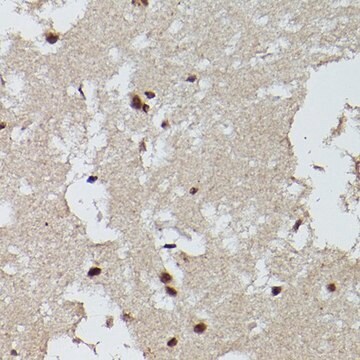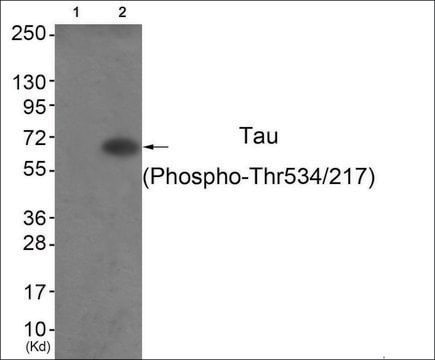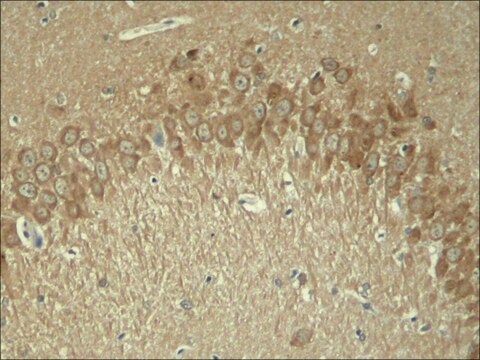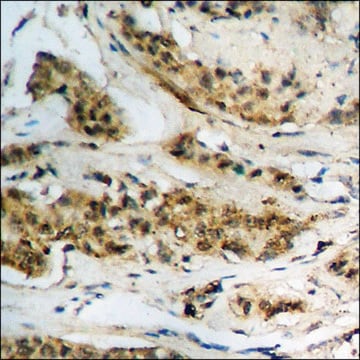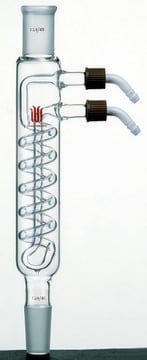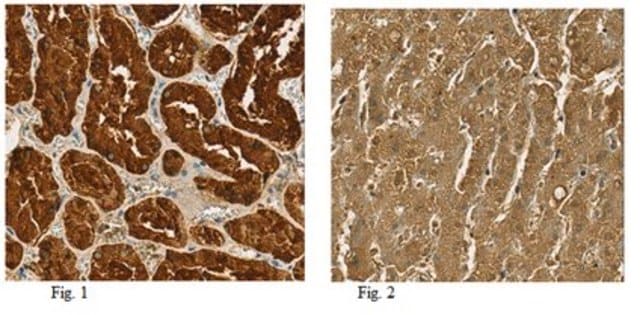MABN388
Anti-phospho Tau (Thr181), clone 1E7 Antibody
clone 1E7, from mouse, purified by affinity chromatography
Sinônimo(s):
Microtubule-associated protein tau, Neurofibrillary tangle protein, Paired helical filament-tau, F-tau
About This Item
Produtos recomendados
fonte biológica
mouse
Nível de qualidade
forma do anticorpo
affinity isolated antibody
tipo de produto de anticorpo
primary antibodies
clone
1E7, monoclonal
purificado por
affinity chromatography
reatividade de espécies
mouse
reatividade da espécie (prevista por homologia)
human (based on 100% sequence homology)
técnica(s)
western blot: suitable
nº de adesão NCBI
nº de adesão UniProt
Condições de expedição
wet ice
modificação pós-traducional do alvo
phosphorylation (pThr181)
Informações sobre genes
human ... MAPT(4137)
Descrição geral
LRRK2 phosphorylates Tau at Thr181, which only occurs when tubulin is associated with Tau otherwise there is no LRRK2-Tau interaction and subsequentTau phosphorylation. The LRRK2 mutant, G2019S, that shows higher PD causes elevated phosphorylation at 181 suggesting a link between the phosphorylation at this site and PD.
Imunogênio
Aplicação
Neuroscience
Neurodegenerative Diseases
Qualidade
Western Blotting Analysis: 1.4 µg/mL of this antibody detected phospho Tau (Thr181) in P301L transgenic mouse brain tissue lysate, and not in wild type mouse brain tissue lysate.
Descrição-alvo
forma física
Armazenamento e estabilidade
Handling Recommendations: Upon receipt and prior to removing the cap, centrifuge the vial and gently mix the solution. Aliquot into microcentrifuge tubes and store at -20°C. Avoid repeated freeze/thaw cycles, which may damage IgG and affect product performance.
Outras notas
Exoneração de responsabilidade
Not finding the right product?
Try our Ferramenta de seleção de produtos.
Código de classe de armazenamento
12 - Non Combustible Liquids
Classe de risco de água (WGK)
WGK 2
Ponto de fulgor (°F)
Not applicable
Ponto de fulgor (°C)
Not applicable
Certificados de análise (COA)
Busque Certificados de análise (COA) digitando o Número do Lote do produto. Os números de lote e remessa podem ser encontrados no rótulo de um produto após a palavra “Lot” ou “Batch”.
Já possui este produto?
Encontre a documentação dos produtos que você adquiriu recentemente na biblioteca de documentos.
Nossa equipe de cientistas tem experiência em todas as áreas de pesquisa, incluindo Life Sciences, ciência de materiais, síntese química, cromatografia, química analítica e muitas outras.
Entre em contato com a assistência técnica